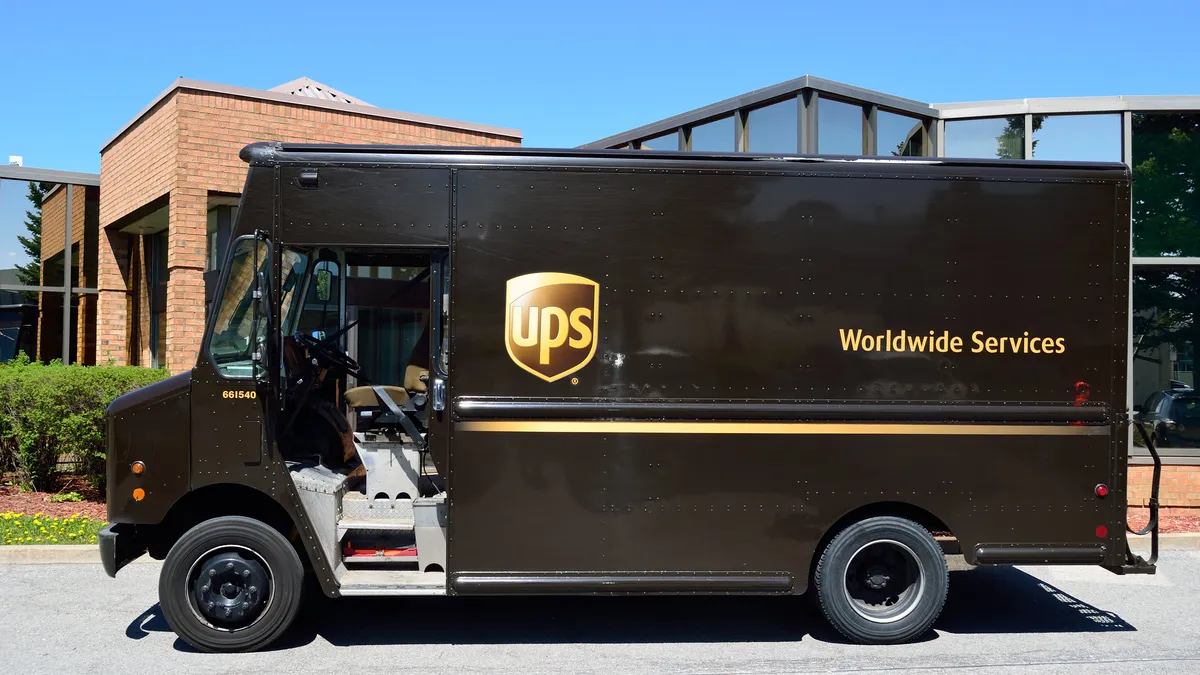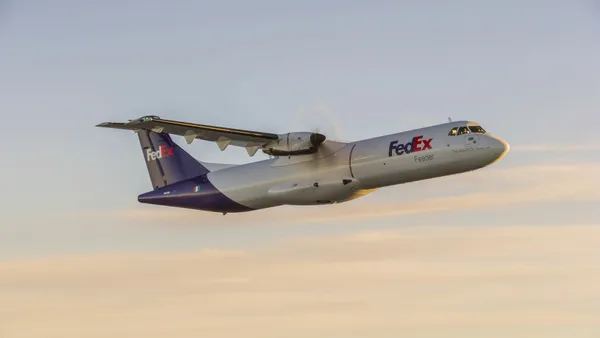Dive Brief:
- UPS reported 8% growth year-over-year in domestic parcel volume for the fourth quarter of 2019 and 6% for the full year on an earnings call Thursday, which CEO David Abney said exceeded the company's expectations.
- The added volume came with a corresponding increase in profitability. Unit cost decreased by 3.2% in the fourth quarter marking the third straight quarter of decline. Executives owed the success to the carrier's shift toward automated warehouse operations and other technology upgrades like dynamic routing. The company will add an additional 5 million square feet of automated capacity this year.
- On the back of more profitable operations, UPS will expand extended-hours pickup to cover 98% of the U.S. population and add more capacity to the carrier's weekend service — doubling deliveries to meet e-commerce delivery expectations. It's that reverence for speed, along with the exit of FedEx from the running, that allowed the carrier to increase its business with Amazon in 2019 — now 11.6% of UPS' revenue reported CFO Brian Newman.
Dive Insight:
UPS was virtually the lone carrier adding air capacity in the third quarter of 2019 — global air freight volume was in a nose dive — but the carrier was sure air would be an essential category as next-day delivery becomes standard for e-commerce deliveries. Peak season proved the company right, said Abney, bringing a 22% surge in next-day air shipments in the fourth quarter.
"The strength of our network allowed us to capitalize on the structural shift in the market for next day delivery and help all customers embrace this trend," said Newman.
UPS' automation work allowed it to keep up with increasing shipping speeds while maintaining healthy margins. At the end of 2019, 75% of domestic ground volume was sorted in automated facilities.
"Our transformation strategies and investments anticipated the growing significance of the global e-commerce and position UPS well to capture opportunities from all customers," said Abney.
A large portion of the five million new square feet of automated warehouse space to come in 2020 will be a "super hub" in Harrisburg, Pennsylvania that will speed up the UPS' network in the Midwest and Northeast.
This hub, as well as other efforts, are intended to significantly reduce time-in-transit for up to 80% of parcels. This metric has been at the center of the carrier's transformation, but Abney said the momentum from UPS's 2019 performance encouraged it to fast-track the transformation — aiming to triple its 2019 time-in-transit reduction in 2020.













